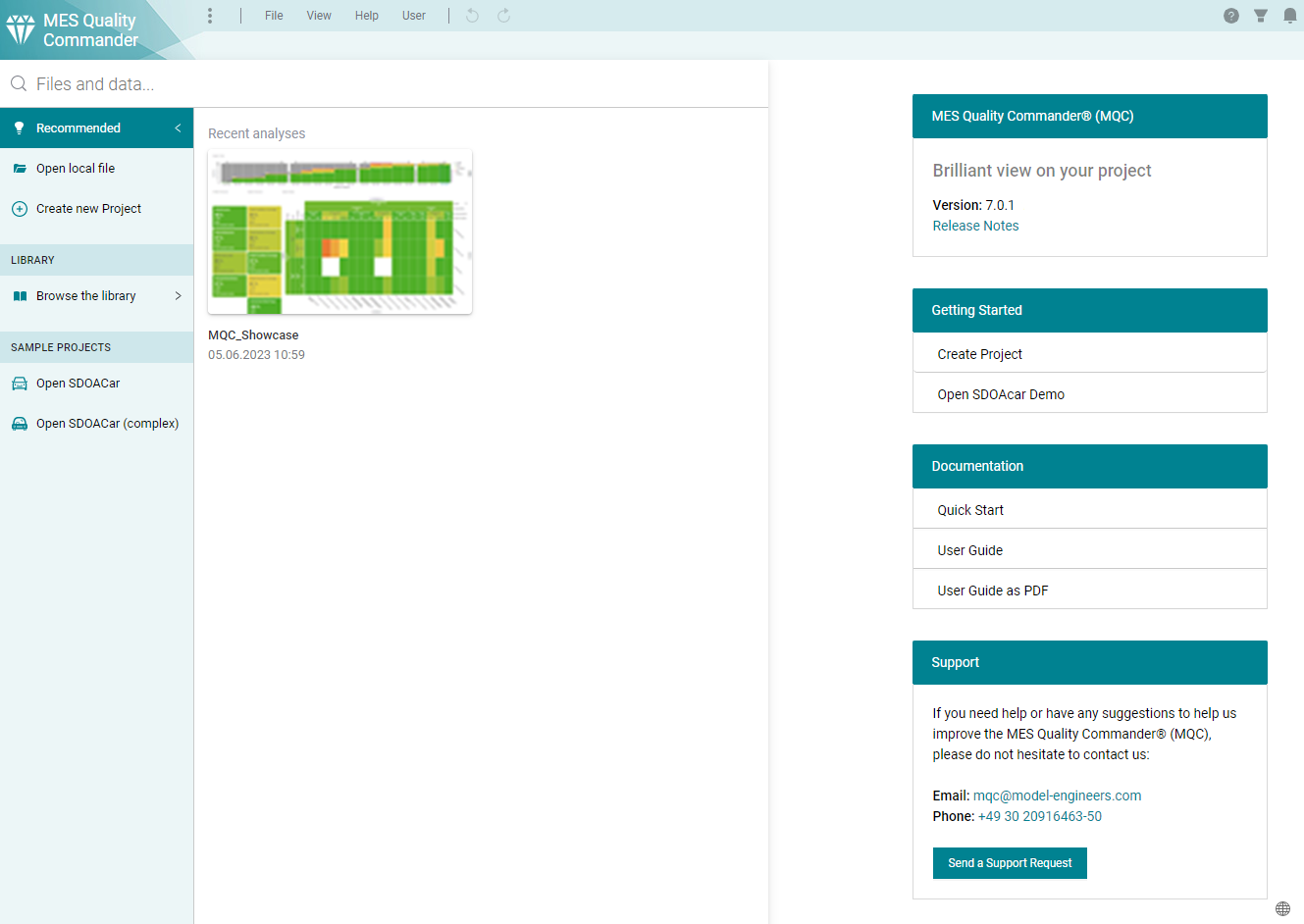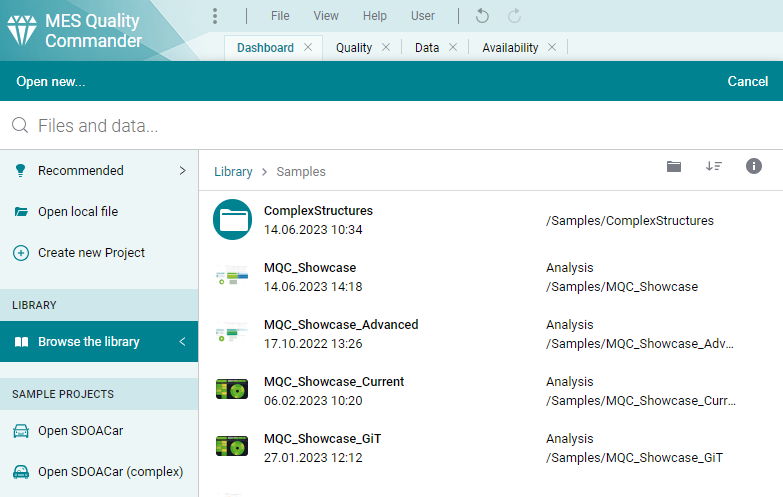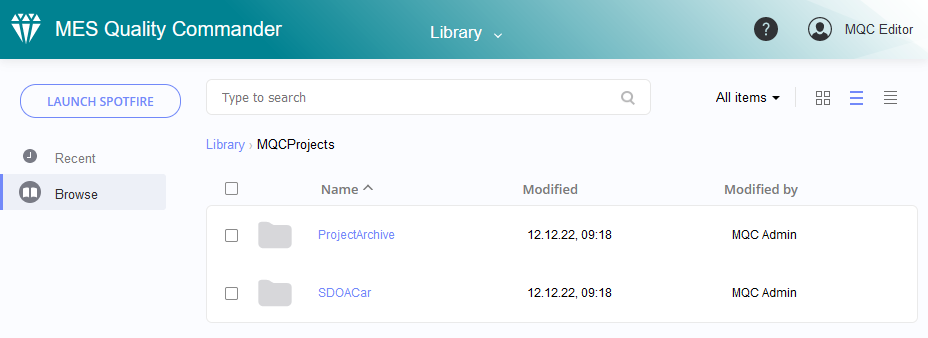3.1. Introduction¶
After opening and logging into MQC, you will see the landing page with the Open-Dialog visible. The Opening Dialog per default shows “Recommended”, where the recently opened projects are listed to provide a quick jump into.

Figure 3.1 Landingpage with Open-Dialog¶
The Open-Dialog gives you the ability to Open a local stored project (.dxp), to Create a new Project (only for Editors), to Browse the Library and to open a project from there, or open one of the Sample Projects.
In the landing page you will find the current version of MQC with a Link to the Release Notes, Getting Started links, Links to the Documentation and the Contact details of our Support Team.
3.1.1. Web Player and Desktop Client¶
The MQC Server provides a Web Player to open a project directly in the browser. When opening a project, a new instance of MQC is created on the server, which allows working with multiple open projects in parallel.
The Web Player is feature identical to the MQC Desktop Client and is recommended.
A link to a specific project opening directly in the web player uses the following format: https://your-mqc-server.intern/spotfire/wp/OpenAnalysis?file={LibraryPath}
3.1.2. Library¶
The MQC Server library is a virtual storage of created projects (.dxp).

Figure 3.2 Server library in the web player or desktop client¶
Every user has access to the same library, but the permissions can restrict access to functionality and whole folders.

Figure 3.3 Server library with accessible folders and saved analyses¶
3.1.3. Sample Projects¶
The example project “SDOAcar” (Self Driving Avoidance Detection car) is meant as an introduction to MQC. Opening the default or the complex configuration of this project presents the user with a fully functional MQC project to play around with (see Quick Start).